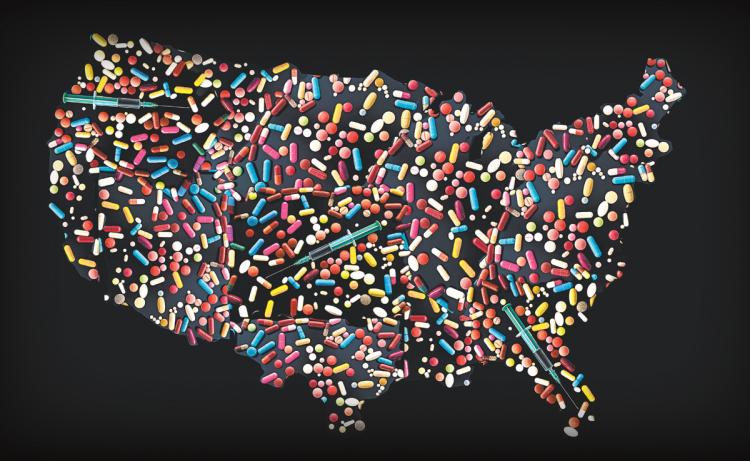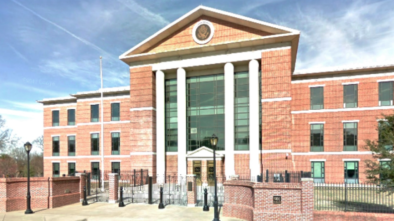Wake Up Carolina Brings to the Spotlight the Opioid Epidemic in the Lowcountry
By Rebecca Powell
On November 14th I attended an “Ideas Into Action” meeting to learn more about the Opioid and Heroin Crisis in our community here in Charleston, South Carolina. Local nonprofit, Wake Up Carolina, was joined by expert panelists to present what we can do as a community to take away the stigma of substance use disorder and—how to start the conversation and feel empowered to make a difference.
The panelist at the “Ideas Into Action” included:
- Chief Ritchie – Mount Pleasant Police Department
- Nanci Shipman – Founder of Wake Up Carolina
- Justin Gass – Assistant Professor at Medical University of South Carolina (MUSC)
- Chanda Brown – Community Center
- Wood Marchant – Director of Collegiate Recovery at College of Charleston
A heroin and opioid overdose epidemic has swept the United States and become a prominent issue in our culture. Every day in the United States, 142 people die from prescription or illegal drug abuse and many of these victims are young adults and children. South Carolina, like other states, has been overcome with unsettling tragedies of lives cut short because of it. Some areas of South Carolina are as high as 200% above the national average for heroin and opioid-related deaths. Opioid-related overdoses are now the #1 killer of young people in South Carolina, where deaths exceed the national average
Here are a few facts you need to know:
- Opioid Prescribing – Doctors wrote 72.4 opioid prescriptions per 100 persons in 2006. This rate increased 4.1% annually from 2006 to 2008 and 1.1% annually from 2008 to 2012. It then decreased 4.9% annually from 2012 through 2016, reaching a rate of 66.5 per 100 persons in 2016. That year, 19.1 per 100 persons received one or more opioid prescriptions, with the average patient receiving 3.5 prescriptions.
- An estimated 259,665 hospitalizations for nonfatal, unintentional drug poisoning occurred in 2014. Opioid poisoning accounted for 20.4% (53,000) of these hospitalizations. Heroin was specified as the involved opioid for 21.7% (11,475) of opioid hospitalizations. Cocaine accounted for 13,265, and methamphetamines for 8,290 hospitalizations.
- A record number of drug overdose deaths occurred in 2015: 52,404. While a death may involve more than one drug, prescription or illicit opioids were involved in 63.1% of these deaths. Among opioid-involved deaths, the most common category was heroin (12,989 deaths), followed by prescription opioids that were natural or semi-synthetic (12,727 deaths), synthetic opioids other than methadone (a category that includes primarily prescription or illicit fentanyl) (9,580 deaths), and methadone (3,301 deaths). Cocaine was involved in 6,784 deaths. Overall, 84.2% of drug overdose deaths were unintentional.
- A total of 214,881,622 opioid prescriptions were dispensed by retail pharmacies in 2016. The total opioid prescribing rate was 66.5 per 100 persons.
*Data provided by: CDC 2017 ANNUAL SURVEILLANCE REPORT OF DRUG-RELATED RISKS AND OUTCOMES
Human Side of the Epidemic
Behind all the statistics are human stories. Stories of tragedy and heartbreak, but also triumph and celebration. This epidemic can only be overcome by sharing stories, understanding and compassion.
ABC News on air personality Dean Stephens shared some personal thoughts with us, “addiction doesn’t discriminate. It doesn’t care if you are young or old, black or white, male or female. I first remember reading about the Opioid epidemic in rural areas in certain parts of our country. Then in a blink of an eye it was in our community.
I’ve been so inspired by Nanci Shipman’s courage and commitment as she deals with the death of her son. Her dedication to lay it all on the line moved to do whatever I can do from a media standpoint to help raise awareness”
A mother, who lost her son, a promising Mount Pleasant high school athlete, shared these anonymous thoughts, “The epidemic is real and you think it could never happen to your child, but it can. We need to stop this epidemic before it gets any worse. If you believe your child is struggling with addiction, do not ignore it, get them help. Urge your children to notice signs of friends and family struggling with heroin or opioid addiction. There are so many resources that you can reach out to, to help. The time is now to rally together to stop the growing number of young people’s death.”
We were also kind enough to get some personal thoughts from a former addict, who we are happy to say is now 25 years sober. She shared, “Recovery is possible. I should know. I have been clean and sober for 25 years, after 12 years of using and abusing drugs. There is no shame in it but there is hope. What Jessica and Ideas into Action proved with their community forum is that there are caring adults who will go to any length to help. There are concerned parents who don’t know where to turn, terrified their child will become the next statistic, the next headline. My advice, ‘Don’t ever give up on the miracle and you don’t have to go through this alone.’”
This event is one of many more opportunities the Lowcountry needs to gather, discuss and take action to reverse this trend. For every life saved, a new story to tell and further justification of the need to act with a sense of urgency.
“Ideas In Action” Meeting Agenda and Action Items
Wake Up Carolina and the panelist wanted to share their new vision on how to handle this epidemic and how the community could get involved. Chief Ritchie stressed that both the board and Mount Pleasant Police Department’s full focus is “Recovery over Incarceration.” The department wants the community to know that they will not be punished for coming to them for help. Their strategy to help the community is
- Educate the public
- Call your principals at elementary, middle and high school and get them to host Wake Up Carolina or the Mount Pleasant Police Department
- Social Media
- Remove the surface
- Get rid of excess prescription drugs
- The Mount Pleasant Police department has a 24 hour “Take Back Box” where the community can drop off unused prescriptions, so the chance of them being brought into trafficking goes down
- The police department has taken back over 200 pounds of prescription drugs since April 2017.
- Identify those at risk
- The police department will start following up with police reports and reach out to help
- Call the police department, if you identify someone at risk
- Access to treatment
- The police department will point you in the right direction whether it is Wake Up Carolina or the Charleston Community center, they will find what best suits the certain case
- Prevent Relapse
- The first day out of treatment, is the most dangerous for someone
- Continue long term treatment, call the police department for advocate recommendations for people who get out of treatment can talk to someone who has gone through the same
Everyone on the panel had the same strategy. The same messages were being told:
“Addiction is not a crime, it is a disease” “Addiction is a disease of the brain” “Anyone with a brain can suffer with addiction” “Medical Issue, not a moral failure”
The message is that this is both a national problem, but is also a Charleston community problem. This is where the phrase “it takes a village” really comes into play. If you would like to learn more, please click on one of the links before to further educate on what you can do, to stop the spread of this addicting epidemic.
Additional References:
Mount Pleasant Police Department
Wake Up Carolina
Addiction Sciences at MUSC
Charleston Center, Charleston County’s Department of Alcohol and Other Drug Abuse Services
College of Charleston Collegiate Recovery Program



